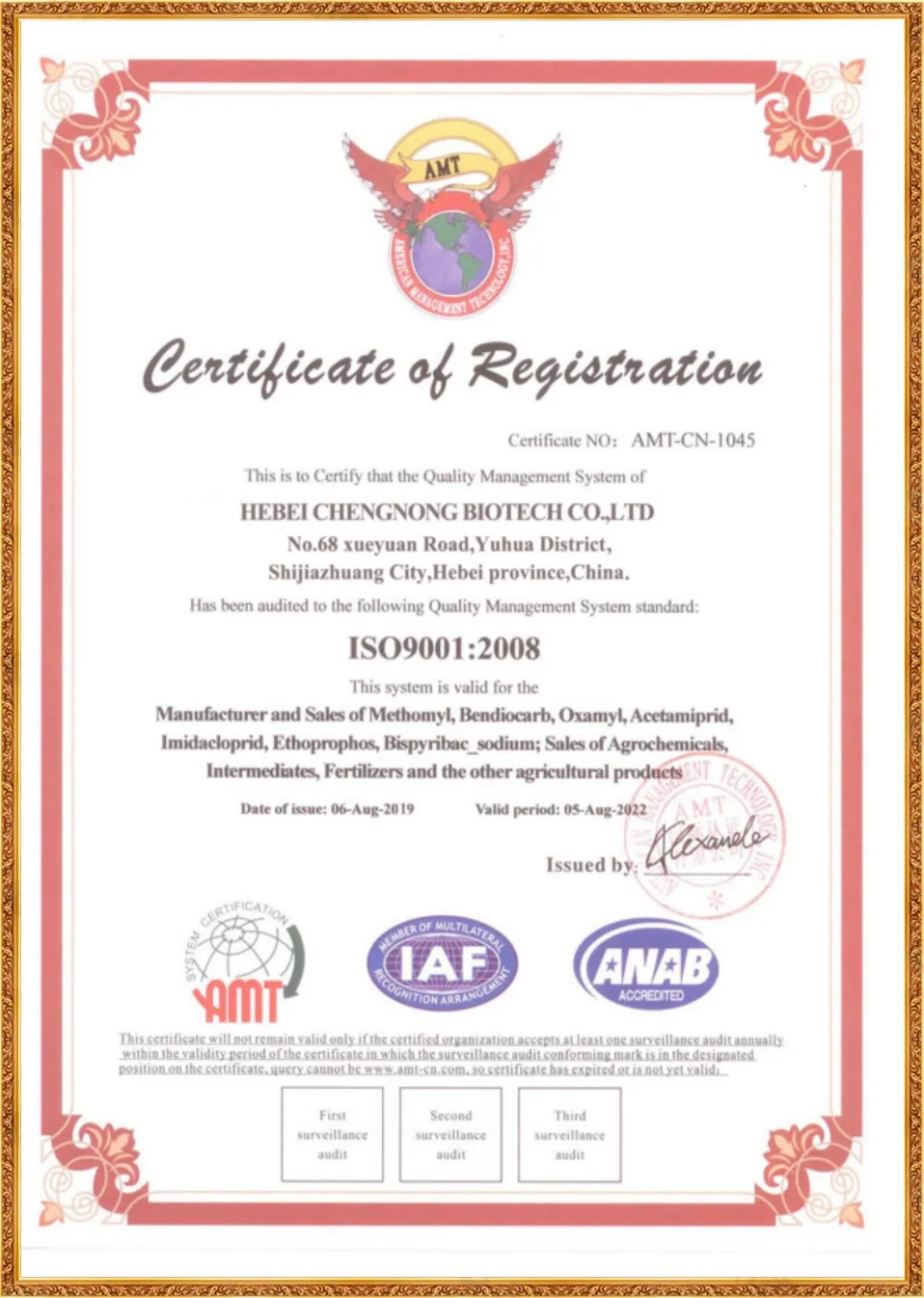
Jul . 23, 2024 14:31 Back to list
Formulation of Flumethrin 4.5% and Imidacloprid 10.0% for Enhanced Pest Control Efficiency
Flumethrin 4.5% and Imidacloprid 10.0% A Dual Approach to Pest Management
In the realm of agricultural pest control, the effectiveness of chemical agents is paramount in safeguarding crops and ensuring high yields. Flumethrin and imidacloprid represent two potent active ingredients that are frequently utilized in formulations aimed at controlling a wide variety of pests. Specifically, a product containing 4.5% flumethrin and 10.0% imidacloprid provides a synergistic approach to pest management, offering enhanced efficacy against both insects and arachnids.
Understanding the Components
Flumethrin is a synthetic pyrethroid, part of a class of chemicals that mimic the natural insecticidal properties of pyrethrins found in chrysanthemum flowers. It disrupts the nervous system of insects, leading to paralysis and death. It is particularly effective against a variety of pests, including mosquitoes, flies, and certain agricultural insects, making it an invaluable tool in integrated pest management systems.
On the other hand, imidacloprid is a neonicotinoid, a class of insecticides that specifically targets the nervous system of insects by binding to nicotinic acetylcholine receptors. This binding results in continuous stimulation of the nervous system, which ultimately leads to insect death. Imidacloprid is widely used against a range of pests, including aphids, whiteflies, and termites, and is renowned for its systemic properties, allowing it to be absorbed by plants and thereby protect them from feeding insects.
The Benefits of Combination
flumethrin 4.5 imidacloprid 10.0

The formulation of 4.5% flumethrin and 10.0% imidacloprid capitalizes on the unique mechanisms of action of each component, providing broader-spectrum control of pests. The combination leads to rapid knockdown of active pests due to flumethrin’s quick action, while imidacloprid offers prolonged residual activity, ensuring that subsequent generations of pests are also affected. This dual action is particularly beneficial in managing pest resistance, as employing multiple modes of action makes it more difficult for pests to develop resistance.
Application and Safety Considerations
When considering the application of this combined formulation, it's essential to follow safety guidelines to minimize risks to non-target organisms, including beneficial insects like pollinators and natural pest predators. Applicators should wear appropriate personal protective equipment (PPE), and proper application techniques should be adhered to, ensuring minimal drift and runoff into non-target areas.
Moreover, it is crucial to integrate the use of chemical controls with non-chemical management strategies, such as crop rotation, habitat manipulation, and the use of resistant plant varieties. By doing so, farmers can create a more sustainable pest management system that reduces reliance on chemical pesticides over the long term.
Conclusion
The combination of flumethrin at 4.5% and imidacloprid at 10.0% delivers a powerful tool in the ongoing battle against agricultural pests. This formulation not only maximizes the efficacy of pest control efforts but also contributes to sustainable agricultural practices by minimizing the development of pest resistance. As the agriculture industry continues to face increasing challenges from pest populations, utilizing innovative solutions like this combination is essential for ensuring the health and productivity of crops, ultimately benefiting food security and environmental health.
-
Best Abamectin 95% | Top Pesticide for Crop Protection
NewsJul.31,2025
-
Insecticide Spirotetramat 11% + Thiacloprid 11% SC at Good Price
NewsJul.30,2025
-
Best Abamectin SDS - Premium Quality & Reliable Safety Data
NewsJul.29,2025
-
Agrochemicals Pesticides Solutions for Sustainable Farming
NewsJul.29,2025
-
High-Quality Tebuconazole Fungicide for Crop Protection at Best Price
NewsJul.29,2025
-
Chlorfenapyr 8% + Clothianidin 20%SC Pesticide Mixture for Effective Pest Control
NewsJul.28,2025
